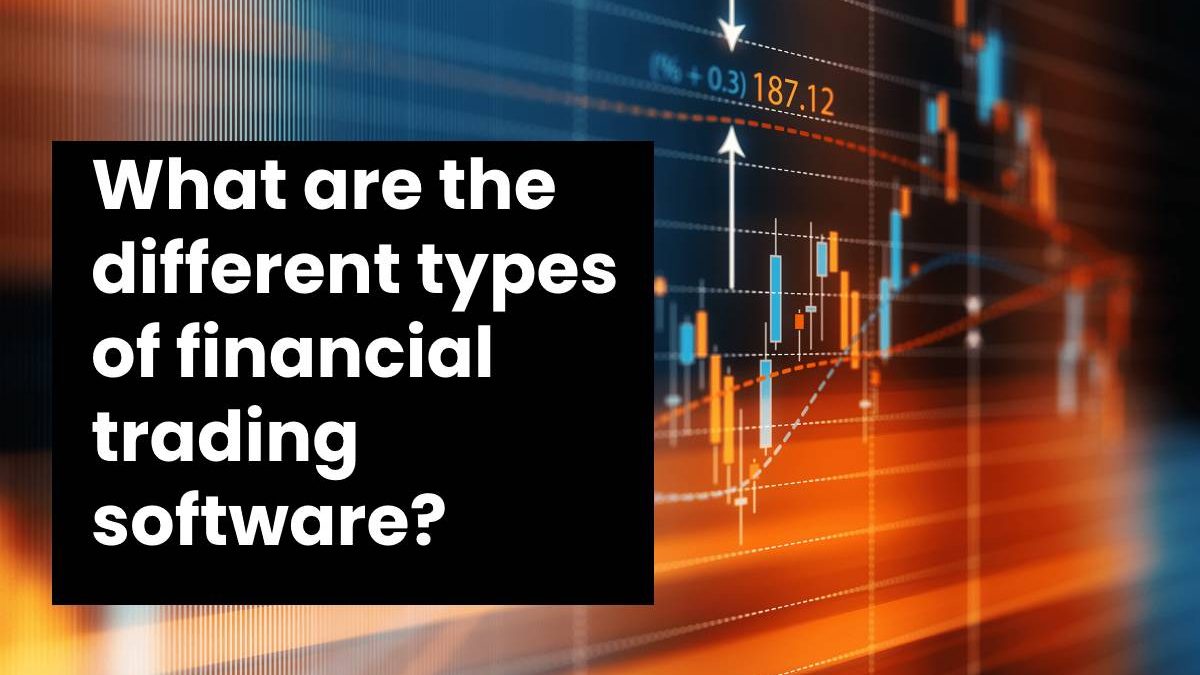What are the different types of financial trading software
Traders can trade securities on different markets through trading platforms if they have funds. Trading platforms that are highly scalable and have sophisticated architecture databases will provide liquidity in secondary markets, as well as security and information transparency.
The network-based environment allows traders and brokers to communicate satisfactorily, apply the appropriate search criteria, and electronically negotiate offers based upon transaction parameters.
A trading platform, in essence, is a network-based marketplace that allows users unlimited functionality to trade, browse financial instrument catalogs and monitor accounts through institutions other than the bank dealer group.
Most trading platforms have a combination of additional features such as in-depth market analysis, real-time quotes, and news feed. These tools facilitate real-time trading information and allow for seamless negotiations between and among traders. Trading platforms can also be tailored to meet the specific needs of certain markets such as stocks, futures, options, and currencies. Trading platforms provide more options for managing trades and execution by offering capabilities that are specific to each market structure.
Platforms can be divided into two categories: commercial and proprietary. The first is the name for trading platforms developed by brokerage firms that meet the needs of the particular niche market in which they operate. As there are numerous proprietary platforms, it is better to check directly with the brokers regarding the software. Several trading portals, such as this site can help you find the brokers and their respective trading platforms, as well as detailed reviews of how they operate. Otherwise, you can search online for individual brokerage platforms and check for user reviews.
The latter category, on the other hand, is mostly utilized by day traders and retail investors. The commercial trading platforms are simple to use and include helpful features such as news feeds and charts to aid research and provide more information for traders and investors.
There are many other types of trading software, beyond commercial and proprietary. Trading requires many tools and techniques that can be used to identify trends. Active trading requires extensive experience in order to select the best trading platform.
There are many types and versions of trading platforms available today. Brokers may offer different platforms. It is important for traders to be aware of these differences. It has been shown that platform type can have an impact on trade results.
Table of Contents
What types of trading platforms are there?
Many factors influence how a forex trading platform should be classified. Continue reading to learn more about the various forex trading platforms.
Format
The format allows trading platforms to be split into downloadable and non-downloadable versions. The non-downloadable online version can be web-based, or it can exist as a downloadable package. Java is used to run web-based online platforms. By simply typing the URL name into the browser, the trader can access the platforms. To access their trading account, the trader must enter specific login details. The platform is accessible from any location. The platform can be accessed from anywhere the traders are located. The downloadable version stores the software on a specific device. They can be downloaded as executable files that must be executed on the device each time the platform is accessed.
Programming Language
Another approach to classifying the trading platforms is looking at the programming language which was used while building the software. MetaTrader, which has MT4 or MT5 versions, was designed using the Metaquotes Language. ActTrader is another platform that was created using the ActFX language. TradeStation is another platform that was created with Lua, Currenex, and cTrader.
MetaTrader: This currency trading platform was created by MetaQuotes Inc. Version MT4 is very popular. Popular forex brokers that are successful have MT4 as their trading platform. It is very easy to use and navigate. These factors are a major reason for its popularity.
MetaTrader 4 (MT4) is a well-known trading platform that is mostly recognized and admired for its seamless order execution. One-click trading is possible from charts. You can also back-test strategies. It also allows automated trading with Expert Advisors (EAs).
MT5: MetaTrader Version 5 is the latest update of the original MetaTrader software. Although the interface looks the same, it has more features. The same interface makes it easier for traders to transition. This version has more technology. You have access to more tools, such as charts and indicators. You can import trade signals from the MetaTrader social network.
The Trading Model
This is where platforms are classified based on the trading model the forex broker uses. How we classify the trading models of the platforms and terminals is either as Direct Market Access (DMA) platforms or as the Dealing Desk (DD) platforms.
Dealing-Desk platforms: These platforms are typically offered by forex brokers who want to be market makers. The platform is connected with the broker’s trading desk, and all trades/transactions must pass through it. The broker’s dealing desk is where all prices originate.
ECN Platforms: Also known as Non-Dealing Desk Platforms. The main feature of the model is the pricing – the dealer’s desk does not provide the price but instead, it comes directly from the many liquidity providers. All prices are displayed on the terminal so traders can select the best price for their trading model. These give traders direct access to the money market.

